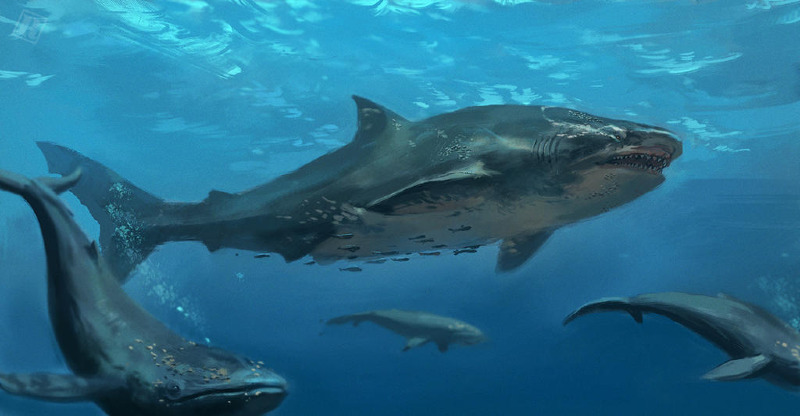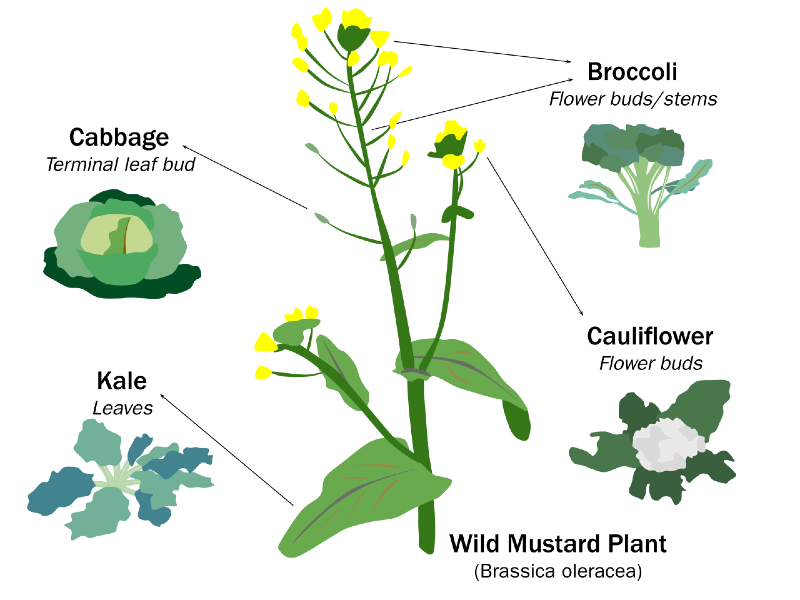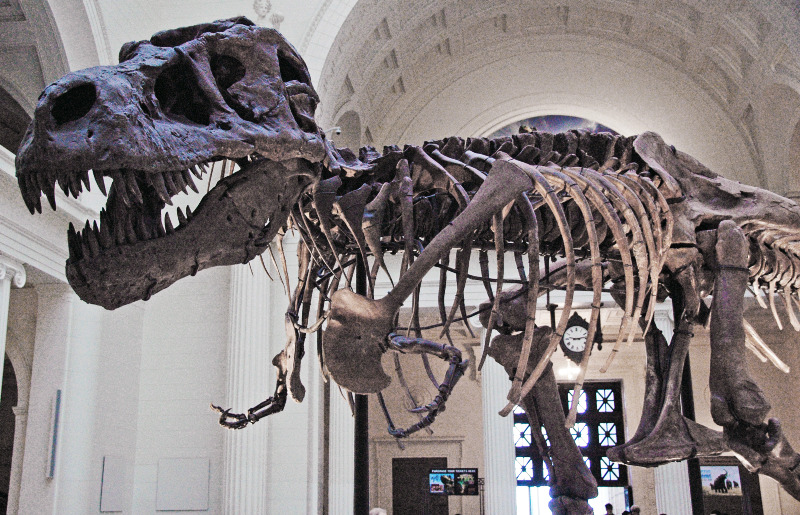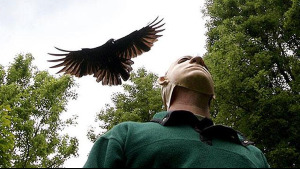|
|

by Theodore B. Morrison, age 13
Sharks are one of the most feared predators on the planet, and while they looked the part, that didn’t protect the population from near-extinction events throughout history. A recent study shows that a large portion of sharks died spontaneously within the span of 100,000 years from start to end, eons ago. There have been different observations and possible conclusions made by scientists.
The event in question occurred 19 million years ago, predating human existence. It is believed to have killed nearly 90 percent of the shark population worldwide. Before the extermination, there was an age of death for many other ocean species, which was followed by the sharks’ long-standing domination over the sea. The ensuing near extinction of the sharks continues to puzzle scientists.
Elizebeth Sibert, paleobiologist and oceanographer at Yale University, was the scientist looking into this event. She observed that sharks with a particular bone shape were targeted specifically. “The project came out of a desire to better understand the natural background variability in these fossils,” she said.
[read more]

by Jordan Banks, age 14
Did you know that many different types of animals and the food you eat are affected by artificial selection? The meat you consume and maybe even your household pet are the products of centuries or even millennia artificial selection.
The definition of
artificial selection
is 'breeding to produce desired characteristics in animal or plant offspring.'
Natural selection
, in contrast, is when an organism independently adapts to their environment to survive. Humans cause artificial selection when they mold the organisms to what people desire.
Many animals are a product of artificial selection. For example, dogs go through artificial selection by dog breeding. The dog originally comes from the wolf, but with thousands of years of breeding we have many different types of dogs. Today we have dogs such as goldendoodles and french bulldogs, both of which were artificially selected.
[read more]

by Jules Da Costa, age 13
Scientists always knew the Tyrannosaurus Rex (T - Rex) had a powerful bite but they were unsure why. Now, new research explains the science behind why the bite had such tremendous power.
Scientists have recently gathered data about the T- Rex’s bite. They discovered that the bone-crushing bite was powered by a stiff lower jaw. The stiffness came from a small boomerang-shaped bone called the prearticular. A study presented in April 2021 shows that this bone was what gave the T- Rex its flexible lower jaw. A flexible lower jaw allowed them to open their mouth wider than most reptiles to bite larger prey. Like all reptiles, T-Rex had a joint in their lower jawbone called the intramandibular joint. Scientists have shown that with a bone spanning this intramandibular joint, the T-Rex could produce a bite force of more than six metric tons of power, which is the weight of an average delivery truck.
The scientists used 3-D scans and computer models to discover how the T-Rex bite was so powerful. One of the scientists was John Fortner. He is a vertebrate paleontologist at the University of Missouri in Columbia, Missouri. John and his colleagues are using some advanced technologies to dig deeper for information about the T-Rex’s bite. First, they started a 3-D scan of its skull. After the scan, they used a computer model to see how the mandible would move. Finally, the scientists created two different versions of the jawbone to see how ligaments and the prearticular affected the bite strength.
[read more]

Experiments Demonstrate Magnitude of Crow Intelligence
by Eva Stouffer, age 13
While it has been known for a long time that crows are smart birds, we may have underestimated their brainpower until recently. One example that demonstrates this is that they can tell the difference between friend and foe, and pass that information on to other crows.
Crows learn to associate faces and places with danger or benefits and can communicate this information to other crows. In addition to being extremely observant of humans they are also observant of other crows. This allows for information about friendly or helpful animals, or about dangerous areas such as busy intersections, to be passed down for generations.
[Read More]

Stephen Hawking Overcame ALS and Revolutionized Physics
by Modou Faye, age 13
Stephen Hawking was born on January 8, 1942 in Oxford, England. By the age of 21, he was studying cosmology at the University of Cambridge when he was diagnosed with ALS.
Over his lifetime, Hawking wrote 15 books and his life was captured in the film ‘‘The Theory of Everything” in 2014. He thought time travel was possible and explained it in his book “A Brief History of Time.” In 1988, Hawking became famous around the world when his book was published. In the book he explained cosmology, but it was difficult to understand for many, so he wrote “The Universe in a Nutshell” in 2001, which was translated into 40 languages.
[Read More]

Dolphins Create Sound Waves to Navigate Underwater
by Destany Jackson, age 13
Dolphins are very intelligent creatures who can do incredible things. One of the most interesting facts about dolphins is their extra sense, echolocation, also known as sonar.
Echolocation is a dolphin’s unique way of seeing underwater to locate and track its prey. A dolphin’s head contains sensitive organs which allow it to send and receive sound waves. These sound waves bounce off underwater objects, giving the dolphin information about size and distance.
[Read More]

Texas - New Hotspot for Driverless Vehicles?
by Eva Stouffer, age 13
Lately, there has been a lot of excitement about driverless cars. In addition to Silicon Valley, Texas is another place where many companies looking to develop autonomous vehicles are headed.
The interest in Texas is due to a new state law that allows Texas manufacturers to test autonomous vehicles on public roads and state highways. A program called “Milo” benefits from this law. Milo offers free transportation from special events, like sports games using autonomous shuttles that have 12 seats each. While an operator is present in these vehicles, he or she does not drive the shuttles.
[Read More]
More Recent Science Articles
Did you know that many different types of animals and the food you eat are affected by artificial selection? The meat you consume and maybe even your household pet are the products of centuries or even millennia artificial selection.
[read more...]
Burmese pythons are truly a fascinating and interesting species. Their eating habits and the incredible size of these snakes are remarkable. These are some of the wonders of the Burmese python.
[read more...]
When people think of Pythons, they think of Florida and the everglades, or even Africa or Asia. Pythons are not found in Europe. At least not today. But research shows these huge snakes did roam the continent more than 20 million years ago.
[read more...]
Utah is known for its preservation of dinosaur fossils. A particular site that stands out is Cleveland-Lloyd dinosaur quarry, a national landmark that is 148 million years old. For decades, scientists have studied this region to understand the Jurassic dinosaur fossils that have been left behind. In particular, they want to understand why the quarry is so packed with carnivorous bones.
[read more...]
There are many illnesses in the world, such as the novel Coronavirus, which is currently fueling a global pandemic. Between 1918-1920, there was another pandemic: the Spanish flu pandemic. These are just a couple of examples of the diseases that epidemiologists study by observing these illnesses and their patterns.
[read more...]
Gravitational waves are identifiable changes in space-time that are produced when objects move at significantly high speeds. According to NASA, gravitational waves can be made when a star explodes asymmetrically, when two big stars orbit each other, or when two black holes orbit each other and merge. For example, when objects move, they create waves, just like when you shake a stick back and forth in the water. The same physics applies when a planet or star shakes back and forth at incredibly high speeds, only instead of waves in the water, gravitational waves are created.
[read more...]
Recently, Nokia, a Finnish telecommunications and consumer electronics company, announced that they are developing the Moon’s first 4G cell network. The network will assist NASA’s Artemis team in their upcoming mission. Artemis is a new lunar exploration program that will put people on the Moon for the first time since 1970.
[read more...]
Animals normally change colors seasonally, but now due to drastic temperature changes, animal camouflage is not following its traditional pattern.
[read more...]
Have you ever rubbed a balloon against your hair, causing it to stand up? This happens because of static electricity. This type of electricity is stationary, meaning it does not flow or move.
[read more...]
There are about 2,000 long-nosed, inquisitive-faced tree shrews that reside in Yunnan, China in the Kunming Institute of Zoology. These tree shrews are the only mammal besides humans known to consume hot chili peppers.
[read more...]
In physics, a culturally perceived “man’s science,” only two women had ever won the Nobel Prize, according to Rachel Ivie from the Statistical Research Center at the American Institute of Physics. This past year, in the fall of 2018, a third took home one of the most prestigious awards in science.
[read more...]
Archaeologists recently discovered a sarcophagus, which is much like a coffin, that was almost 2,000 years old in Germany. This sarcophagus contained the remains of an ancient woman. This discovery is particularly interesting because the woman went to her afterlife fully prepared with jewelry, makeup, and perfume.
[read more...]
Growing is important. As you go through life, your body is programmed to change its shape and size. Same goes for animals.
[read more...]
Do you ever wonder why you look the way you do? The answer to your question is DNA, which stands for Deoxyribose Nucleic Acid. DNA is what determines your hair color, skin color, and any other physical traits you possess.
[read more...]
Keeping up with yearly flu vaccines can be tough. Getting poked by a needle feels terrible, but it is much better than catching the flu virus, which can kill you. Recently, scientists announced they may be able to develop a universal flu vaccine. This would mean no more yearly vaccines and less pain.
[read more...]
While it has been known for a long time that crows are smart birds, we may have underestimated their brainpower until recently. One example that demonstrates this is that they can tell the difference between friend and foe, and pass that information on to other crows.
[read more...]
Stephen Hawking was born on January 8, 1942 in Oxford, England. By the age of 21, he was studying cosmology at the University of Cambridge when he was diagnosed with ALS.
[read more...]
Dolphins are very intelligent creatures who can do incredible things. One of the most interesting facts about dolphins is their extra sense, echolocation, also known as sonar.
[read more...]
Lately, there has been a lot of excitement about driverless cars. In addition to Silicon Valley, Texas is another place where many companies looking to develop autonomous vehicles are headed.
[read more...]
Recently, there has been a huge spotlight on changes happening in the transportation industry. While the media may only be focusing on driverless cars, another transformation may be coming our way. Although there are still many problems to be solved, companies and inventors are working on building the next technological revolution - flying cars.
[read more...]
For decades, humans have relied on a number of methods to harness energy including solar and power. Osmotic energy is a new way to create clean energy just by using water, salt water, and a tiny membrane. The end result is optimized power in a more resourceful way.
[read more...]
The gloomy octopus, a species who resides in subtropical waters off eastern Australia and northern New Zealand, is usually an antisocial creature. In fact, the octopus meets with other octopuses only once a year to mate. But new discoveries may change what scientists thought they knew about the introverted octopus.
[read more...]
Snowy owls live up to nine years and, as their name suggests, their fur is snow white—but only sometimes. These resourceful creatures rely on smart mating habits to survive as a species.
[read more...]
For years, scientists have recorded volcanic eruptions. One such explosion, the biggest in recorded history, is known as “The Big Bang at Krakatoa.”
[read more...]
The most common cause of death in America, cancer is a frightening and devastating disease. About 1.5 million Americans are diagnosed with cancer every year.
[read more...]
Coastal sand crumbles at the human touch but is powerful enough to form barrier islands. Have you ever wondered how this is possible?
[read more...]
The ice giant, better known as Neptune, was the first planet located through mathematical predictions rather than from observing the sky.
[read more...]
Do you know how a solar eclipse forms? It happens when the moon gets between the sun and the Earth.
[read more...]
When people think of climate change, they may picture polar bears not having enough ice to stand on and drowning. But recently, only two chicks out of a population of 40,000 Adelie penguins survived, officially placing this species on the endangered species list. The reasons for why this happened are more complicated then rising sea levels.
[read more...]
This past summer, there was a lot of excitement about the solar eclipse. What many may not know, is that another rare astronomical event happened around the same time. Two
interferometers
, instruments that measure interference phenomena between waves, detected merging neutron stars on August 17, 2017.
[read more...]
Lightning is a beautiful but dangerous phenomenon. Many think it is white, but is it really?
[read more...]
Many people worry that artificial intelligence, abbreviated
AI
, will one day replace humans, even in creative areas such as composing music. In a step in that direction, YouTuber Taryn Southern has created a song with the help of AI software.
[read more...]
Most buildings nowadays are made of metal. However, the new Festival Foods located on East Washington Avenue took advantage of another organic material: ash and red pine trees.
[read more...]
Over thousands of years, generations of stargazers and astronomers from every culture have located and named the constellations known to humanity. We have been fascinated by space for so long that, amazingly, we may know more about space than our own Earth. Nevertheless, with newer technology, we are always learning more about far distant parts of our skies.
[read more...]
Bread is a food as common as they come. Many eat it almost everyday. So it might surprise you to learn that this seemingly inconspicuous item actually has quite the impact on our environment.
[read more...]
The way people have learned to read and interpret written language is something that scientists have studied for a long time. How is it that simple marks on a mere piece of paper can convey mind-changing ideas?
[read more...]
Since the 1800’s, temperatures have increased in abnormal ways, thus spurring global warming.
[read more...]
In rural Wisconsin, there are barns everywhere--or nearly everywhere, it seems. Most of them are red. This is no coincidence.
[read more...]
Earlier this year, scientists stumbled upon a specimen they claim to be the oldest fossil ever discovered – dating back at least 3.77 billion years. In a recent study, researchers Mattew S. Dodd, Dr. Dominic Papineau, and their colleagues at the University College London examined rocks from a formation in Canada called Nuvvuagittuq.
[read more...]
Think about how often you see rocks every day. Have you ever imagined that one could be alive? Unless you are in Chile or Peru, this probably isn’t the case. But then again, after reading about this creature, you may believe anything is possible.
[read more...]
Humans see light in a number of ways. Each way depends on light and wavelengths.
[read more...]
From car seats to cosmetics, you probably use foam products every day. But did you know that commercial foam is fabricated right here in Madison, Wisconsin?
[read more...]
A study in the journal Nature, showed that in the next 50 years, a quarter of the world’s land animals and plants could become extinct. That’s around a million species.
[read more...]
Over 430,001 years ago, a murder occurred in Northern Spain. Well, at least a suspected one. In the cave system Sima de los Huesos, translated in English to Pit of Bones, scientists found a skull with many injuries.
[read more...]
Can coffee stunt your growth? No. While you may have been told this myth when you were little, there is actually no scientific evidence to back this claim.
[read more...]
Vine, a worldwide app run by Twitter, enabled users to create six-second videos and post them online for others to view, like, and share. Bought from entrepreneurs Dom Hofmann, Rus Yusupov, and Colin Kroll by Twitter in October of 2012, Vine faced a lack of funding from its beginning. Despite the pleas of many, Vine owners officially shut down their mobile app in 2016.
[read more...]
Once thought of as a device for only the wealthy, the computer has become a part of everyday life. But they didn’t always look the way they do today.
In the late 1970's, Intel released the first “home computer.” This model was big and clunky, but it did what it was advertised to do: solve complex math problems and receive faxes.
[read more...]
Fossils are remnants of organisms that died millions of years ago. They can provide information about organisms that we may not otherwise know.
[read more...]
At the 2017 Oscars, 98-year-old Katherine Johnson took the stage. It is not customary for a mathematician to be honored at this awards show; however, with the release of Hidden Figures, Johnson’s life story—in all of its success and difficulty—quickly became a national conversation. As depicted in the film, Johnson pushed through the struggles of being an African-American woman in a white-male dominated field and accomplished amazing things.
[read more...]
A species of arachnids, spiders are widely unique creatures.
Spiders have a number of interesting physical features.
[read more...]
The Galapagos are a group of oceanic islands made up of 15 main islands, 42 islets, and 26 rocks and reefs. Located in the Pacific Ocean, the islands were created when lava rose from the sea bed. The region also has a marine reserve of 79,900 square kilometers.
[read more...]
What is the ugliest, strangest, grumpiest looking animal? According to the Ugly Animal Preservation Society, it’s the blobfish.
[read more...]
For thousands of years, humans have been watching the sky. They’ve mastered the patterns of the stars and can easily find constellations like the zodiacs, Pleiades, the Big Dipper, Orion, and many other star clusters. Ancient people knew their way around the night sky; if you want to learn to be as skilled in astronomy and stargazing as they were, follow these tips below.
[read more...]
The Great Barrier Reef, at the bottom of the Pacific Ocean, is an astounding symbol of life and beauty. Home to thousands of creatures, it is currently under threat of destruction, however, and could ultimately become a representation of how the world can kill a natural-made beauty.
[read more...]
For decades, an old astronaut dummy sat collecting dust at the National Air and Space Museum’s (NASM) warehouse in Suiteland, Maryland. No one knew what it was, and passerbys often wondered why it was there and for what purpose.
[read more...]
Did you know that the famous astronomer Galileo Galilei was the first to study the Milky Way in 1610? The Milky Way is our home, and there is much to learn about it.
[read more...]
Millions of stars that are held together by gravitational attraction form a galaxy. Certain galaxy centers emit lots of energy. Astronomers think that this energy is created by a black hole. Such galaxies are known as active galaxies.
[read more...]
Scientists suspect that the Milky Way may have dwarf galaxies all around it. One of these galaxies is known as "Segue 2."
Segue 2 is an abnormally small galaxy located right outside of our galaxy, the Milky Way. This dwarf galaxy only has 1,000 stars; they are held together by a clump of dark matter. First discovered in 2009, Segue 2 is primarily known for its unique size.
[read more...]
Can you imagine printing your dinner? 3D printing technology might soon have the power to do just that—and so much more.
[read more...]
Remember that cloud that looked like a dragon or had the texture of cotton candy? Have you ever wondered what types of clouds they were? Each type of cloud is made by a certain weather condition. By observing the clouds in the sky, you can understand current weather and predict future weather.
[read more...]
La Western Diamondback serpiente de cascabel (
crotalus atrox
) es la única serpiente que actualmente traquetea. Estas serpientes de cascabel son “generalistas,” que significa que no son tan delicadas respecto a su hábitat. Se pueden encontrar en el suroeste de los Estados Unidos y México en los desiertos, llanuras, bosques, laderas rocosas y áreas a lo largo de la costa.
[read more...]
Jaguars are not only strong swimmers – they're also the only wildcats that enjoy going in water. This is just one of their many unique characteristics.
[read more...]
Venus and Mars are the two closest planet to Earth. Scientists have discovered a lot about these planets. Venus is the hottest planet in our solar system. Venus has toxic clouds and acid that would burn human skin. Heat From the sun gets trapped by clouds around the planet. This is what makes Venus so hot. Even though Mercury is the closest planet to the sun, Venus is still the hottest.
[read more...]
Many vertebrates use their teeth, jaws, or breaks to capture and eat their prey. The type of tooth, beak, or jaw depends on where the vertebrae lives and what exactly it eats.
[read more...]
There are many fun things to do during winter, such as snowmobiling and skiing. However, it is possible for winter sports enthusiasts to misjudge weather conditions and get hurt or killed by an avalanche. Today, avalanches kill about 30 people each year; where in the 1950s, this number was much smaller – only four a year.
[read more...]
About 100,000 years ago tigers roamed the Indochinese region. Thus deemed “Indochinese Tigers,” these powerful beasts are said to be the ancestors of all other tiger subspecies.
[read more...]
Deep inside planet Earth, stones are being formed into priceless gemstones. Whatever crystal or stone the Earth is making, it is regarded as a gemstone if worn as jewelry.
[read more...]
Jupiter is the largest planet in our solar system; in fact, 11 earths would barely stretch over the diameter of Jupiter. For centuries, scientists have been interested in this massive planet and its moons.
[read more...]
Eons ago, ancient civilizations noticed a reddish and extremely bright star in the sky. They named this star Mars. Over the course of hundreds of years, humans learned that this star is actually a planet. Space scientists discovered that the planet?s days (called
sol?s
), seasons, and possible vegetation are all similar to Earth?s.
[read more...]
If you look up to the sky every night for a week, you see the same moon. But each night it looks a little different.
[read more...]
Family trips, the flu, various appointments—these are the reasons commonly given by students seeking excused school absences. But allergies and asthma? Though it might sound odd, Sennett Middle School’s Health Office recently cited allergies and asthma as the top causes of missed school days in middle school-aged children.
[read more...]
Billions of galaxies exist across the universe. Our home, Planet Earth, is located in a galaxy called the Milky Way.
[read more...]
Hace unos 340 años algunas personas cuestionaron el porque las cosas caían por su propio peso hacia abajo y no hacia arriba.
[read more...]
Con la cara de un dinosaurio pequeño, el lagarto volado Australiano es uno de de los reptiles más extraños y impresionantes. Solo 20 pulgadas en longitud y menos de dos libras, este lagarto vive en los áreas tropicales y los bosques de Australia y Nueva Guinea.
[read more...]
|






|
|
|
|

